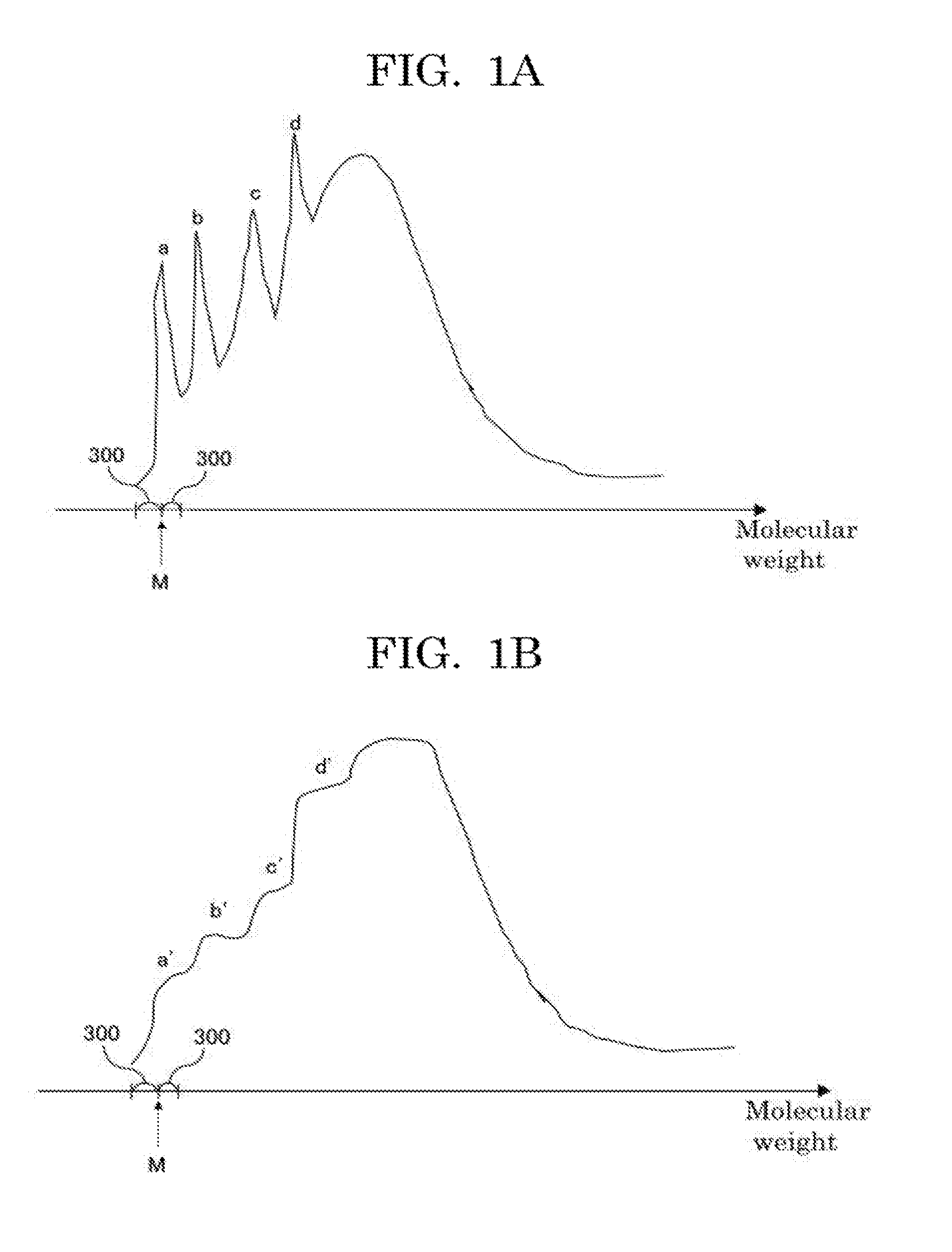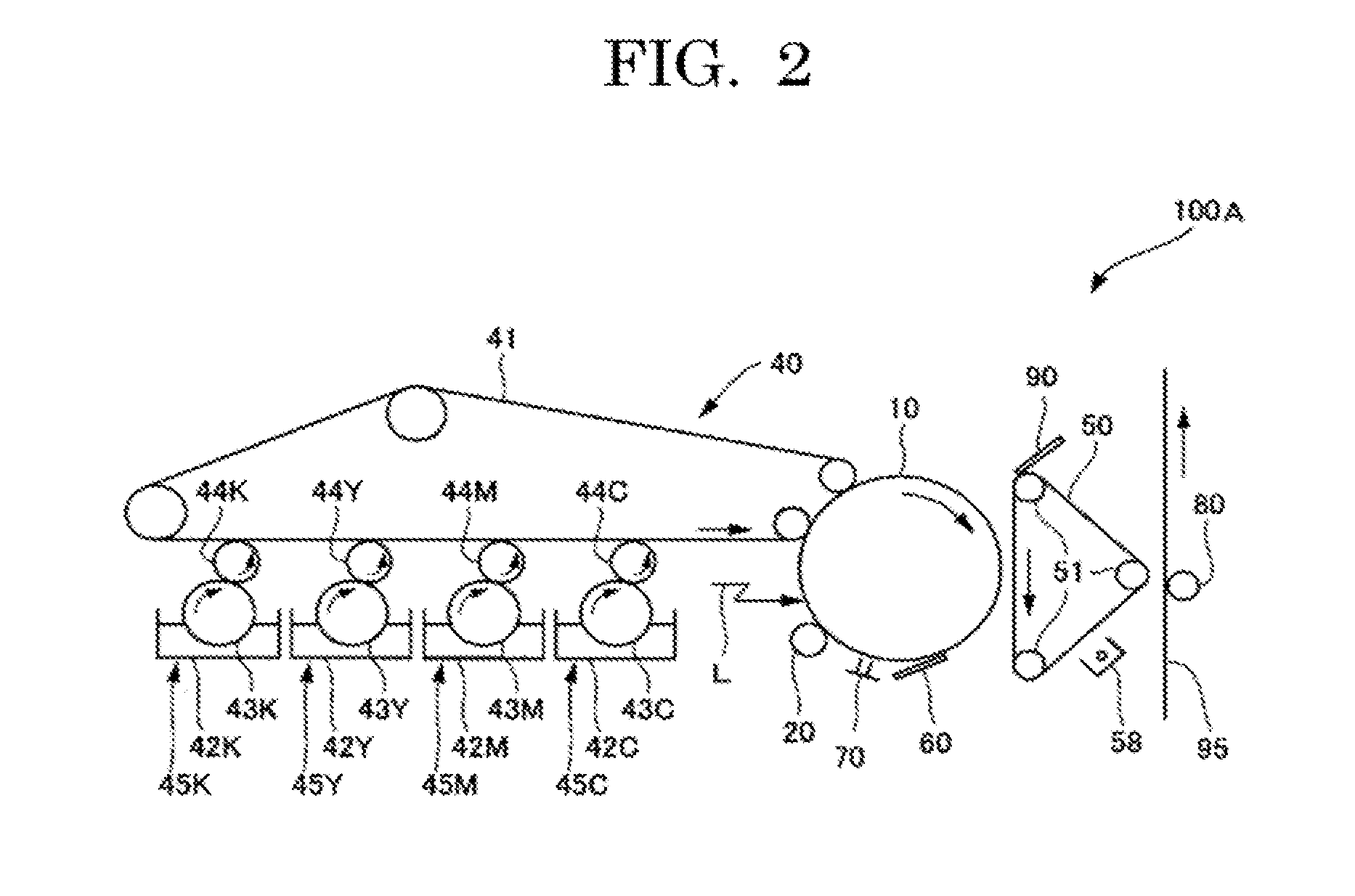Toner, toner stored unit, and image forming apparatus
a technology of toner storage unit and toner storage unit, which is applied in the direction of optics, instruments, developers, etc., can solve the problems of plasticizer compatibility, deterioration of storage capacity, and deterioration of storability, so as to improve the low temperature fixing property, charge stability, and storage stability
- Summary
- Abstract
- Description
- Claims
- Application Information
AI Technical Summary
Benefits of technology
Problems solved by technology
Method used
Image
Examples
examples
[0298]Examples of the present invention now will be described, but the present invention is not limited thereto. In the following description, “%” means “% by mass” and “part(s)” means “part(s) by mass,” unless otherwise stated.
synthetic example a-1
Synthesis of Binder Resin A-1
[0299]A reaction container equipped with a nitrogen inlet tube, a water outlet tube, a stirrer, and a thermocouple was charged with 160 parts by mass of deionized water, 0.04 parts by mass of an aqueous sodium polyacrylate solution (solid content: 3.3% by mass), 0.01 parts by mass of Dispersing agent A produced according to the below described method, and 0.4 parts by mass of sodium sulfate, followed by adding with 80 parts by mass of styrene, 20 parts by mass of butyl acrylate, and 0.3 parts by mass of trimethylolpropane triacrylate, each of which served as a monomer component; and 2 parts by mass of benzoyl peroxide and 0.5 parts by mass of t-butyl peroxy-2-ethylhexyl monocarbonate, each of which served as a polymerization initiator. The reaction container was heated from 40° C. to 130° C. for 2 hours while contents therein were stirred. After reaching 140° C., the contents were allowed to be reacted with each other for another 3 hours to thereby obtai...
synthetic example a-2
Synthesis of Binder resin A-2
[0301]A reaction container equipped with a nitrogen inlet tube, a water outlet tube, a stirrer, and a thermocouple was charged with 376 parts of bisphenol A propylene oxide 2 mol adduct and 109 parts of bisphenol A propylene oxide 3 mol adduct in a molar ratio of 80 / 20 (bisphenol A propylene oxide 2 mol adduct / bisphenol A propylene oxide 3 mol adduct), and 116 parts of isophthalic acid and 44 parts of adipic acid in a molar ratio of 70 / 30 (isophthalic acid / adipic acid) so as to be OH / COOH=1.33, followed by reacting together with 500 ppm of titanium tetraisopropoxide under normal pressure at 230° C. for 10 hours to thereby obtain a reaction product. Then, the reaction container was added with 26 parts of benzoic acid, followed by reacting under reduced pressure of a range of from 10 mmHg through 15 mmHg for 5 hours. Thereafter, the reaction container was added with 11 parts of trimellitic anhydride, followed by reacting under normal pressure at 180° C. fo...
PUM
| Property | Measurement | Unit |
|---|---|---|
| glass transition temperature | aaaaa | aaaaa |
| glass transition temperature | aaaaa | aaaaa |
| molecular weight distribution | aaaaa | aaaaa |
Abstract
Description
Claims
Application Information
 Login to View More
Login to View More - R&D
- Intellectual Property
- Life Sciences
- Materials
- Tech Scout
- Unparalleled Data Quality
- Higher Quality Content
- 60% Fewer Hallucinations
Browse by: Latest US Patents, China's latest patents, Technical Efficacy Thesaurus, Application Domain, Technology Topic, Popular Technical Reports.
© 2025 PatSnap. All rights reserved.Legal|Privacy policy|Modern Slavery Act Transparency Statement|Sitemap|About US| Contact US: help@patsnap.com



